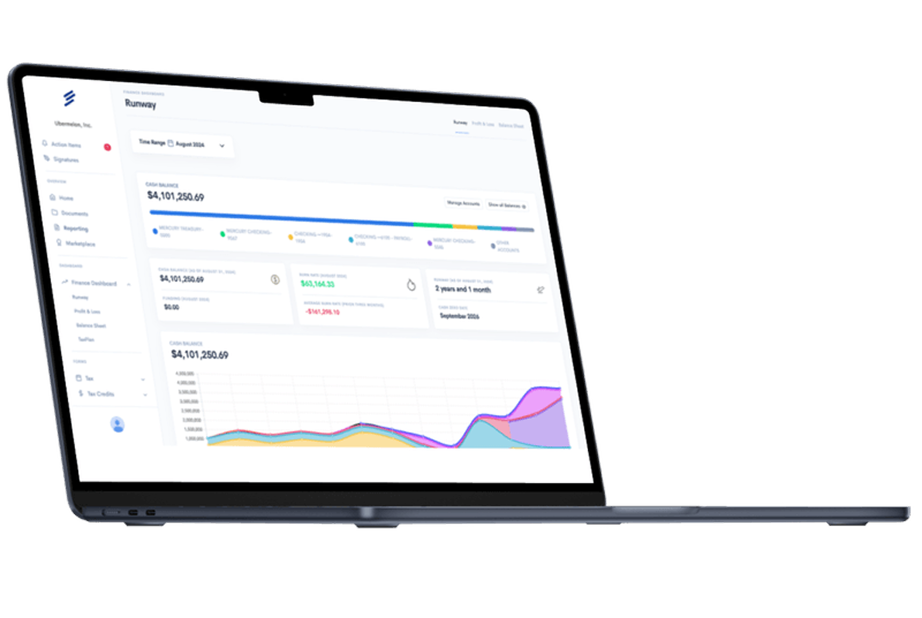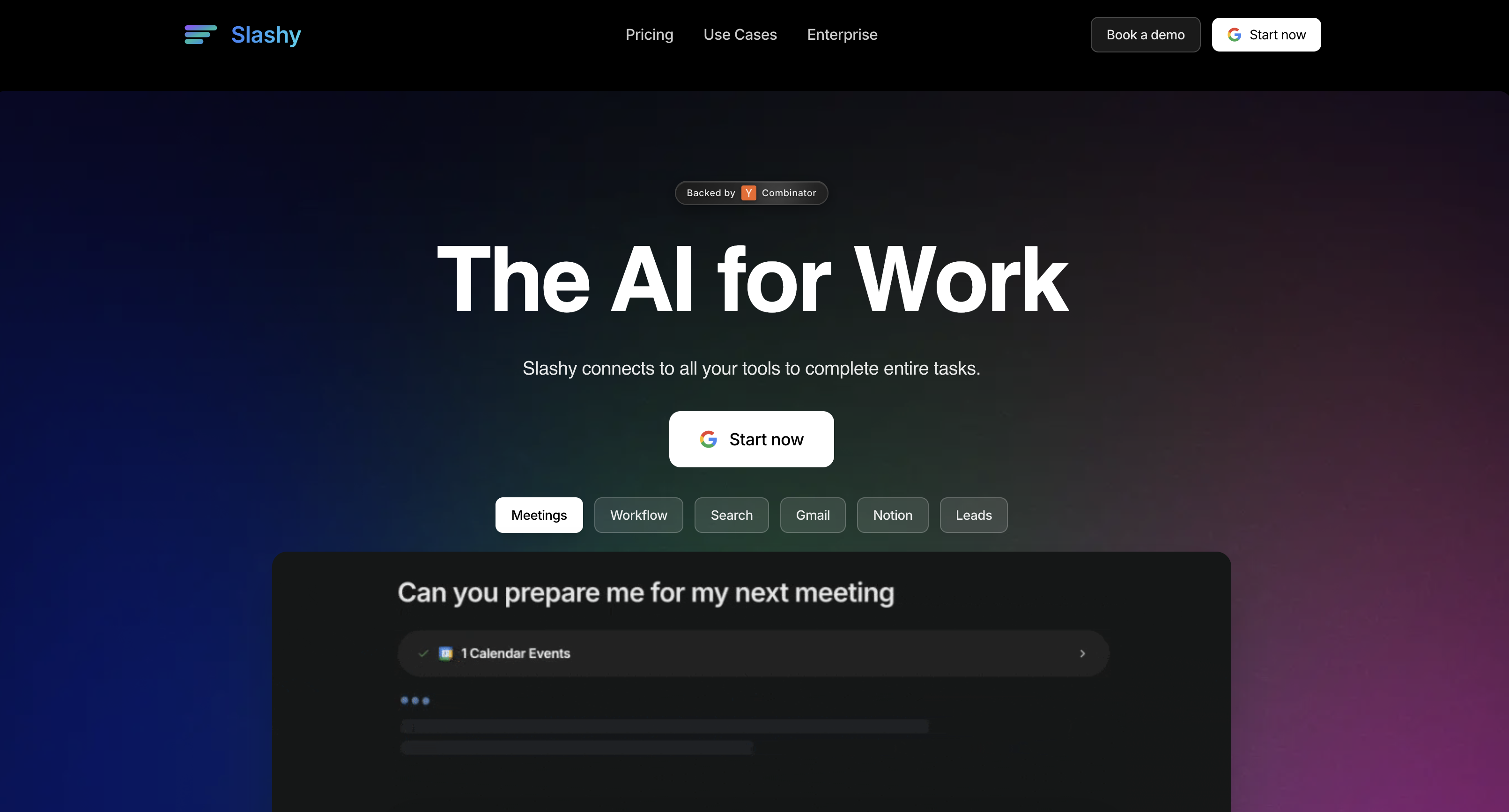In today's competitive business environment, selecting the right payroll service has become increasingly critical for companies of all sizes.
Choosing the right payroll service can significantly impact your business's operational efficiency and financial management. Gusto and QuickBooks Payroll stand as two dominant options in the market, each offering unique advantages for companies seeking streamlined payroll solutions. Understanding the key differences between these platforms will help you make an informed decision that aligns with your specific business needs and future growth plans.
What Makes These Payroll Services Different?
Gusto has established itself as a comprehensive people platform extending beyond basic payroll processing. With its user-friendly interface and intuitive design, Gusto offers a streamlined approach to managing employee compensation that particularly benefits small to medium-sized businesses without dedicated HR departments. The platform prioritizes simplicity without sacrificing functionality, making complex payroll tasks accessible to users with varying levels of expertise.
QuickBooks Payroll leverages the strength of Intuit's accounting ecosystem, creating a cohesive financial management experience for businesses already using QuickBooks for accounting. This integration allows companies to maintain accounting and payroll functions within a unified system, eliminating the need for data transfers between separate platforms. Many businesses find this connectivity creates significant workflow efficiencies, especially when managing comprehensive financial operations.
Both platforms have evolved significantly in recent years, expanding their feature sets to address the growing demands of modern businesses. While they share fundamental payroll processing capabilities, their approaches to pricing, tax management, employee benefits, and additional HR functions reveal important differences that influence which solution might best suit your specific business requirements.
Core Platform Strengths
Gusto excels in creating an intuitive user experience focused on simplifying complex payroll processes. The platform's design philosophy centers on making payroll management accessible to business owners without specialized training. This approach has earned Gusto a reputation for reducing the administrative burden associated with payroll processing.
QuickBooks Payroll builds on Intuit's established accounting framework, creating natural synergies for businesses already invested in the QuickBooks ecosystem. The platform leverages familiar interfaces and data structures, potentially reducing the learning curve for companies with QuickBooks experience. This integration creates particular value for businesses seeking consolidated financial management tools.
Each platform offers distinct advantages depending on your existing technology infrastructure and specific payroll requirements. Companies should evaluate these core strengths against their unique operational needs when determining which solution provides the best foundation for their payroll management.
How Do Their Pricing Structures Compare?
When evaluating Gusto versus QuickBooks Payroll, pricing structures represent a crucial consideration for budget-conscious businesses. Gusto offers a transparent pricing model with four distinct plans, starting with a base package at $49 monthly plus $6 per employee. This straightforward approach allows businesses to accurately forecast payroll processing costs without concern for unexpected charges.
QuickBooks Payroll similarly structures its pricing with a base monthly fee starting at $45, plus $5 per employee. However, costs increase with higher service tiers, and contractor payments incur additional fees-$15 monthly for up to 20 contractors and $2 for each additional contractor requiring direct deposit. This escalating cost structure means businesses must carefully assess their current and future staffing needs when calculating total expenses.
Both services offer free setup without requiring initial investment beyond the standard monthly fees. For businesses processing numerous contractor payments or anticipating workforce growth, these incremental costs can significantly impact the total investment over time.
Hidden Cost Considerations
Beyond base pricing, businesses must evaluate the comprehensive costs of additional features they might need. While Gusto includes many expanded features within their pricing tiers, QuickBooks often positions similar capabilities as premium add-ons, potentially increasing implementation costs for businesses requiring complete payroll and HR solutions.
Multi-state tax filings represent another cost consideration. QuickBooks charges extra for multi-state tax filings in their Core and Premium tiers, while Gusto includes multi-state functionality in their higher-tier plans without additional charges. For businesses with employees across multiple states, these differences can substantially impact total operating costs.
The value proposition extends beyond advertised pricing to include efficiency gains, reduced administrative burden, and potential cost savings from integrated functionality. Companies should consider both direct subscription costs and indirect operational impacts when evaluating the total financial investment required for each platform.
What Payroll Processing Features Do They Offer?
The core functionality of any payroll system lies in its ability to efficiently process employee compensation. Gusto has designed its platform with time efficiency as a priority, claiming their customers spend only 11 minutes on average for each payroll run. Their system eliminates time-consuming aspects of payroll administration, requiring just a few clicks to complete the process either via desktop or mobile platforms.
QuickBooks Payroll, functioning as an extension of the established QuickBooks platform, wasn't originally built exclusively for payroll management. Once initial company setup is complete, the software can handle payroll automatically for salaried employees, though hourly workers may require additional information input for each pay cycle. This difference in automation capabilities can impact efficiency for businesses with predominantly hourly workforces.
Both platforms support unlimited payroll runs regardless of company size, making them suitable for businesses with various payment schedules or those needing to process special one-time payments. Each system generates comprehensive payroll summaries before submission, allowing administrators to verify accuracy before finalizing payments.
Automation Capabilities
Gusto offers these automated payroll features:
- Scheduled processing: Set up recurring payroll runs that execute automatically on predetermined dates
- Tax calculations: Automatic computation of all applicable taxes based on employee information
- Direct deposits: Seamless fund transfers to employee accounts without manual intervention
- Year-end processing: Automated W-2 and 1099 generation and distribution
QuickBooks provides these automation tools:
- QuickBooks integration: Automatic synchronization with accounting data
- Payroll tax calculations: Built-in tax table updates and calculations
- Payment scheduling: Ability to schedule future payroll runs
- Tax form generation: Automated creation of required tax documents
For businesses transitioning between systems, both Gusto and QuickBooks offer data importing capabilities, though Gusto is often praised for its smoother onboarding experience and more intuitive navigation. These differences can significantly impact implementation timelines and the learning curve for administrative staff responsible for payroll management.
How Do They Handle Tax Compliance?
Tax compliance represents one of the most critical aspects of payroll management. Gusto approaches tax administration comprehensively, automatically collecting and filing payroll taxes across local, state, and federal jurisdictions. The platform handles W-2 forms for employees and 1099 forms for contractors directly, eliminating manual filing requirements.
QuickBooks Payroll also provides robust tax management features, calculating, filing, and paying payroll taxes similar to Gusto. However, important limitations exist within their service tiers. Only one state filing is included in their standard payroll package, with additional states incurring a $12 monthly fee for Core and Premium service levels.
Both platforms guarantee accuracy in their tax calculations and filings, but their approaches to implementation differ significantly. Gusto's fully automated multi-state tax management provides particular value for businesses with distributed workforces or those operating across state lines.
Tax Filing Differences
Key distinctions in tax management include:
- Multi-state capabilities: Gusto handles multiple state filings without additional charges in higher tiers, while QuickBooks charges per additional state
- Local tax handling: Gusto automatically files local taxes; QuickBooks requires manual submission of local tax forms
- Tax guarantee: Both platforms offer tax filing accuracy guarantees, but implementation details vary
- Year-end processing: Both automate W-2 and 1099 generation, though Gusto's process typically requires less manual intervention
For businesses prioritizing complete tax automation with minimal manual intervention, Gusto's comprehensive approach to tax filing across all jurisdictions typically offers greater convenience and potentially lower total costs. This advantage becomes particularly significant for companies with multi-state operations or those anticipating geographic expansion.
What Benefits Administration Options Exist?
A comprehensive employee benefits package has become increasingly critical for attracting and retaining quality talent. Gusto offers free benefits administration as an add-on to its payroll plans, providing access to over 3,500 health insurance plans from top carriers including BlueCross BlueShield, Humana, and United Healthcare. This model requires businesses to pay only the premium costs without additional administrative fees.
Gusto's benefits offerings extend beyond health insurance to include 401(k) retirement plans, commuter benefits, workers' compensation, and flexible spending accounts. Their licensed advisors provide guidance to help businesses identify appropriate health coverage options that align with budgetary constraints while meeting employee needs.
QuickBooks Payroll offers more limited benefits administration capability, focusing primarily on health benefits and workers' compensation. While these basic benefits administration functions are available across all service levels, workers' compensation administration is restricted to Premium and Elite tiers, with fees waived only at these higher price points.
Benefits Management Comparison
- Evaluate your benefits needs by identifying which offerings are essential for your workforce
- Consider the administrative burden of managing benefits across multiple platforms
- Calculate the total cost of benefits administration, including both direct fees and staff time
- Assess the value of integrated benefits management versus potentially lower costs with separate systems
For businesses seeking comprehensive benefits administration within their payroll platform, Gusto's expanded offerings typically provide greater value and flexibility. The integration of diverse benefit options into a unified system simplifies administration while potentially enhancing the overall compensation package available to employees.
What HR Tools Are Included?
Human resources functionality extends beyond basic payroll processing, and both platforms offer varying levels of HR support. Gusto's Plus and Premium plans include integrated time tracking tools that streamline monitoring employee hours and processing PTO requests. Their platform also integrates with popular third-party time tracking solutions, allowing automatic importation of employee hours directly into the payroll system.
QuickBooks Payroll takes a different approach to time management, including TSheets time tracking features exclusively in their Premium and Elite packages. If purchased separately, TSheets Premium service costs $8 monthly per user plus a $20 base fee monthly, while the Elite service increases to $10 per user with a $40 base fee.
Beyond time tracking, Gusto offers a more comprehensive HR toolkit including employee onboarding workflows, document management, performance review systems, and compliance assistance. These features create a more complete human resources ecosystem compared to QuickBooks' more limited HR capabilities.
HR Feature Comparison
Gusto provides these HR tools:
- Employee self-service: Digital access to pay stubs, tax forms, and personal information
- Onboarding automation: Streamlined new hire documentation and setup processes
- Performance management: Tools for feedback, reviews, and development tracking
- Compliance assistance: Guidance on regulatory requirements and best practices
QuickBooks offers these HR capabilities:
- Basic employee records: Digital storage of essential employee information
- Limited self-service: Employee access to basic payroll information
- Time tracking: Advanced time management in higher-tier plans
- Reporting tools: Standard payroll and employee reports
The distinction between integrated versus add-on HR capabilities represents a significant consideration when evaluating total system costs and administrative efficiency. Gusto's built-in HR functionality typically provides a more cohesive experience, while QuickBooks may require additional investments to achieve comparable HR capabilities.
How Does Customer Support Compare?
Reliable customer support becomes crucial when navigating payroll complexities. Gusto backs its products with a dedicated sales and customer support team available every weekday via phone, email, and chat. Their support system extends to all Gusto products, ensuring customers can access assistance regardless of their chosen plan level.
QuickBooks provides an extensive knowledge base through their website, allowing users to find answers independently. For more personalized assistance, QuickBooks support representatives are available by phone, though their support availability may be more limited compared to Gusto's multi-channel approach. The quality of support experiences often influences overall satisfaction with payroll platforms, especially during critical periods like year-end processing or tax filing deadlines.
User feedback frequently highlights customer service as a distinguishing factor between these platforms. Gusto typically receives higher ratings for support quality and responsiveness, with users citing the helpfulness and knowledge of support staff when resolving complex payroll issues.
Support Resources
Support accessibility becomes particularly important during system implementation and year-end procedures when time-sensitive issues may arise. Businesses should consider their internal payroll expertise when evaluating support requirements-companies with limited payroll experience may benefit more significantly from Gusto's reputation for responsive and thorough customer assistance.
Organizations with experienced payroll administrators might find QuickBooks' self-service resources sufficient for their needs. The value of dedicated support increases proportionally with the complexity of your payroll operations and the criticality of timely issue resolution for your business continuity.
Both platforms continue enhancing their support offerings, recognizing that effective assistance represents a key differentiator in the competitive payroll services market. Recent improvements focus on reducing response times and expanding self-service knowledge bases to address common questions more efficiently.
How Do They Connect With Other Business Software?
The ability to connect payroll systems with complementary business software creates substantial operational efficiencies. Gusto's platform integrates with a diverse range of popular business applications across accounting, time tracking, point of sale, and expense management categories. Partners include FreshBooks, Expensify, When I Work, and Xero among many others.
QuickBooks Payroll was primarily designed to integrate with other QuickBooks software solutions. While this creates excellent synergy within the Intuit ecosystem, it potentially limits flexibility for businesses using diverse software platforms. Interestingly, certain QuickBooks products can integrate with Gusto, acknowledging the value Gusto brings to the payroll landscape.
Integration capabilities directly impact data accuracy and administrative efficiency by eliminating duplicate entries and reconciliation requirements. Automated data flows between systems reduce error potential while saving significant staff time.
Integration Ecosystem Benefits
- Identify all business systems that would benefit from payroll integration
- Evaluate the complexity and cost of establishing necessary connections
- Consider future software needs that might require additional integrations
- Assess the impact of integration limitations on operational efficiency
For businesses using multiple software platforms to manage various operational aspects, Gusto's broader integration ecosystem typically offers greater flexibility and potential for comprehensive system connectivity. When evaluating payroll platforms, organizations should inventory their existing software infrastructure and assess how each payroll solution would connect with these systems.
Which Platform Best Fits Your Business?
Selecting between Gusto and QuickBooks Payroll ultimately depends on aligning platform strengths with specific business requirements. Gusto demonstrates particular strength for small to medium businesses prioritizing user experience and HR functionality. Its comprehensive platform excels at managing complex benefits administration, multi-state tax filings, and providing integrated human resources tools.
QuickBooks Payroll offers compelling advantages for businesses already utilizing QuickBooks for accounting functions. The seamless data integration between accounting and payroll creates operational efficiencies difficult to replicate with separate systems. Organizations with primarily single-state operations and straightforward benefit structures may find QuickBooks Payroll provides sufficient functionality at competitive pricing.
Industry-specific needs also influence platform selection. Service-based businesses with hourly employees might benefit more from Gusto's integrated time tracking, while retail or professional service firms using QuickBooks for inventory and project management might gain efficiency advantages from QuickBooks Payroll's native integration with these functions.
Decision Factors
Implementation complexity represents another consideration. Gusto has earned recognition for smoother onboarding and intuitive design, potentially reducing transition challenges for businesses with limited payroll expertise. Conversely, companies with established QuickBooks processes may find adding QuickBooks Payroll creates less organizational disruption despite potentially steeper learning curves for new users without QuickBooks experience.
The right choice emerges from thorough assessment of current requirements, anticipated future needs, existing technology infrastructure, and organizational priorities regarding user experience, integration capabilities, and support requirements. Taking time to evaluate these factors against each platform's strengths will lead to a more successful implementation and higher long-term satisfaction.
How To Choose Your Ideal Payroll Solution
As we progress through 2025, both Gusto and QuickBooks continue evolving their platforms to address emerging payroll challenges and business needs. Gusto has consistently expanded its HR ecosystem, suggesting future development will likely enhance its human resources capabilities while maintaining its user-friendly approach. Their investment in benefits administration indicates continued expansion in this space.
QuickBooks, supported by Intuit's substantial development resources, continues strengthening integration between payroll and their broader financial management ecosystem. Recent improvements in their mobile capabilities suggest increased focus on accessibility and on-the-go management features. Their development trajectory indicates enhanced automation particularly benefiting businesses using multiple Intuit products.
Both platforms are addressing the increasing complexity of remote and distributed workforce management, incorporating features supporting geographic flexibility and compliance with varying jurisdictional requirements. As remote work remains prevalent, these capabilities will likely become increasingly sophisticated.
When selecting a platform, businesses should consider not only current capabilities but also alignment with anticipated future needs. Organizations planning significant growth, geographic expansion, or benefit program enhancements should evaluate how each platform's development direction aligns with these strategic objectives. Similarly, businesses should assess their internal technology roadmap, considering how payroll system selection might influence future technology decisions across accounting, human resources, and workforce management functions.
The ideal payroll solution should grow with your business, adapting to changing needs while maintaining operational efficiency. By thoroughly evaluating both platforms against your specific requirements, you'll identify the solution that best positions your organization for current success and future growth.
Simplify Startup Finances Today
Take the stress out of bookkeeping, taxes, and tax credits with Fondo’s all-in-one accounting platform built for startups. Start saving time and money with our expert-backed solutions.
Get Started







.jpg)

.png)









